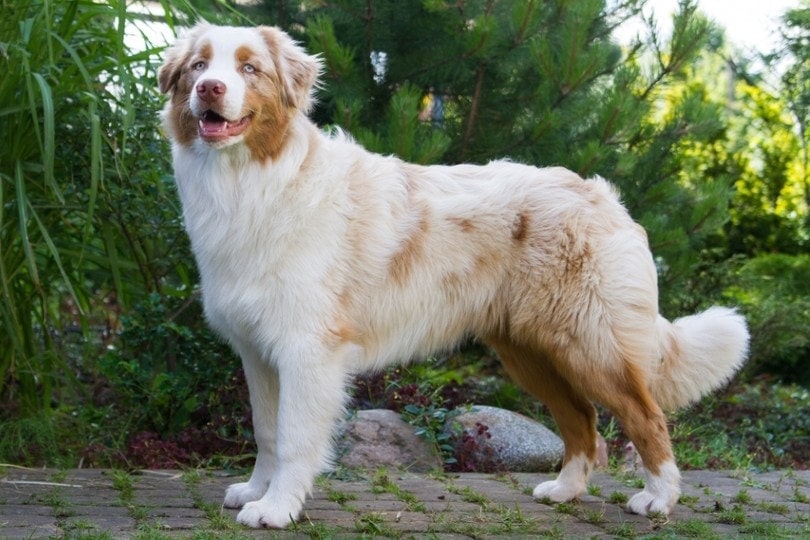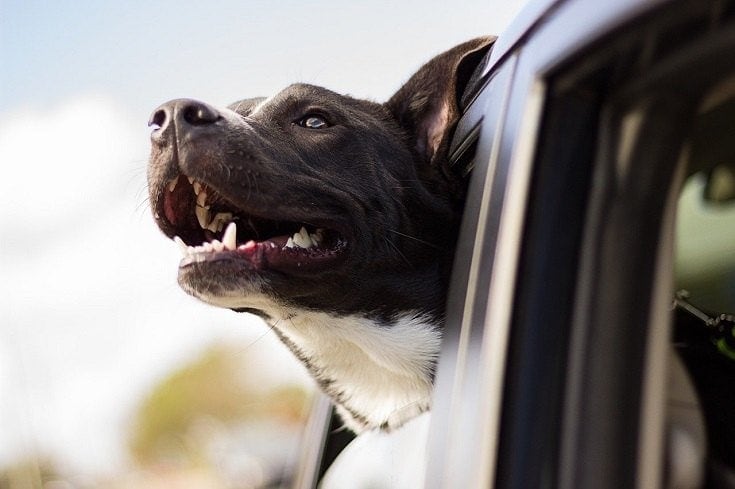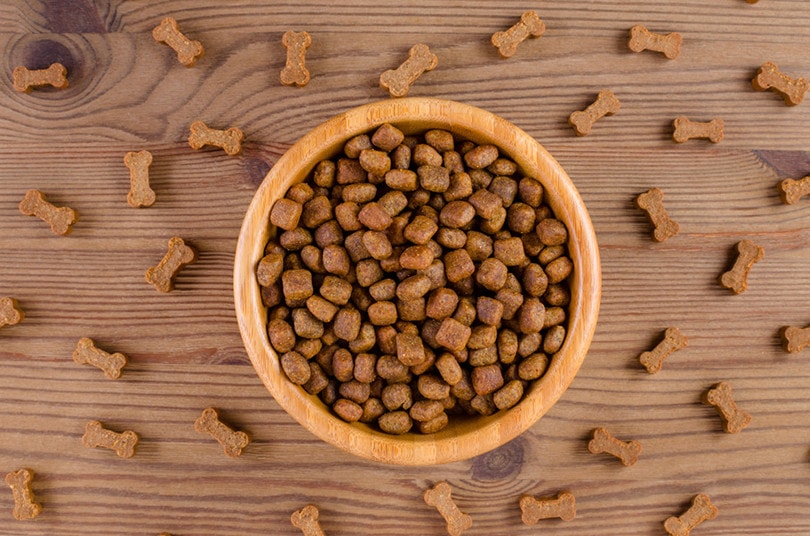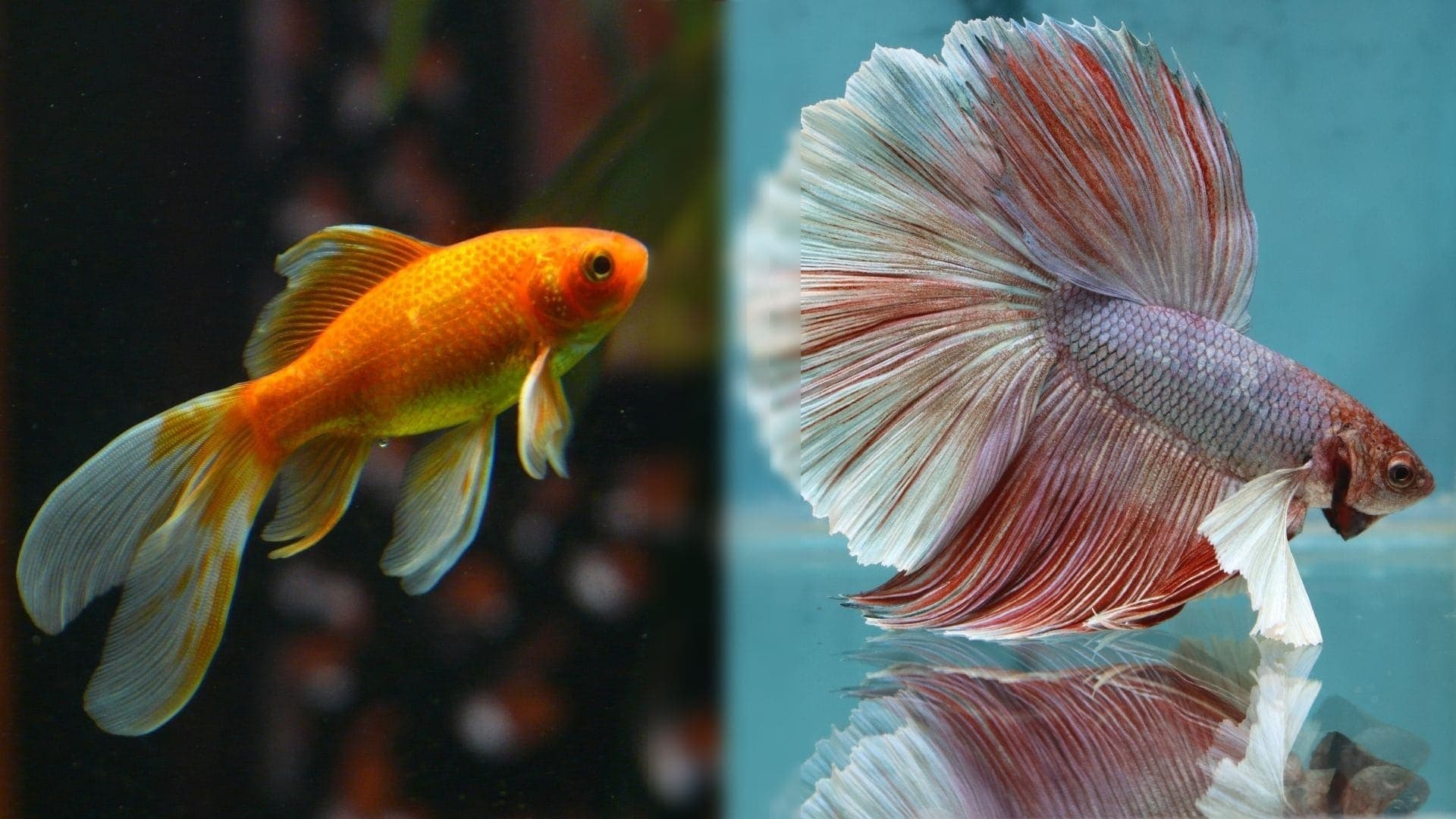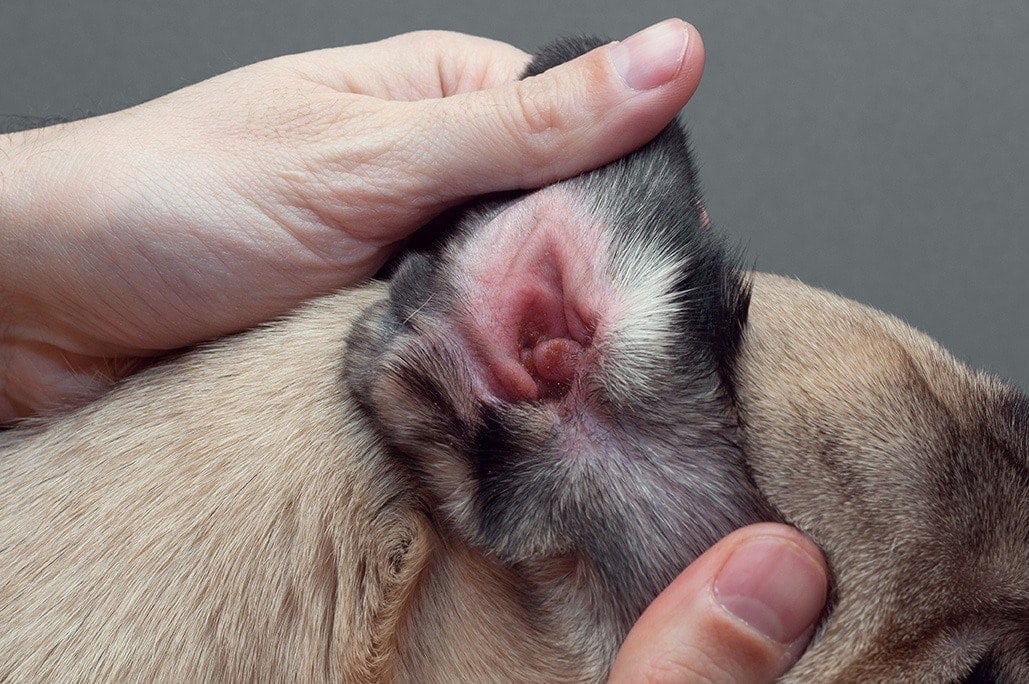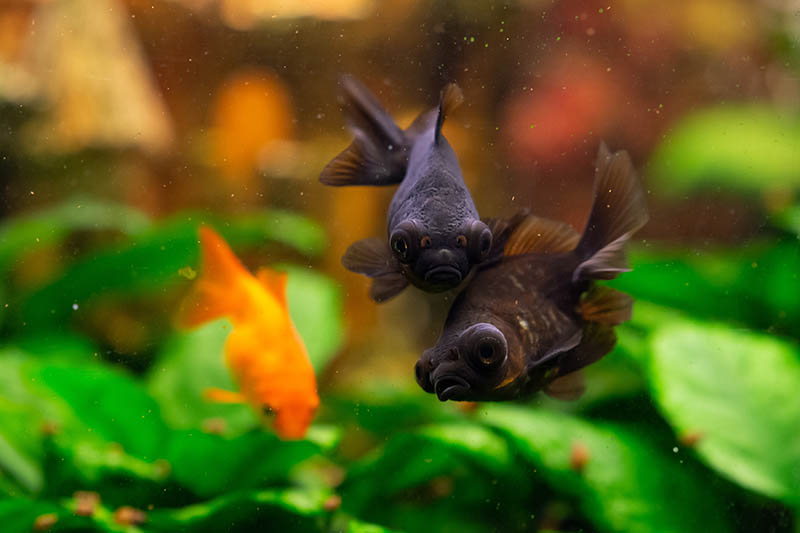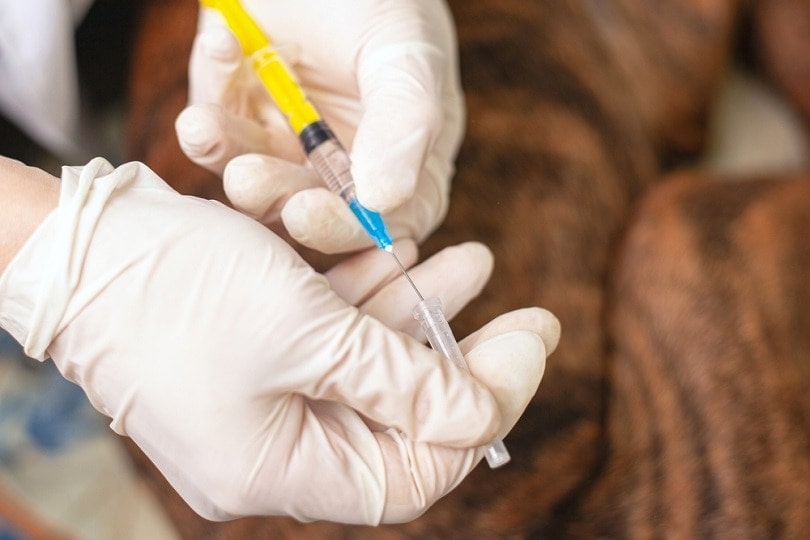Dog Won’t Eat Their Food But Will Eat Treats? 5 Reasons & Vet Approved Tips

Updated on
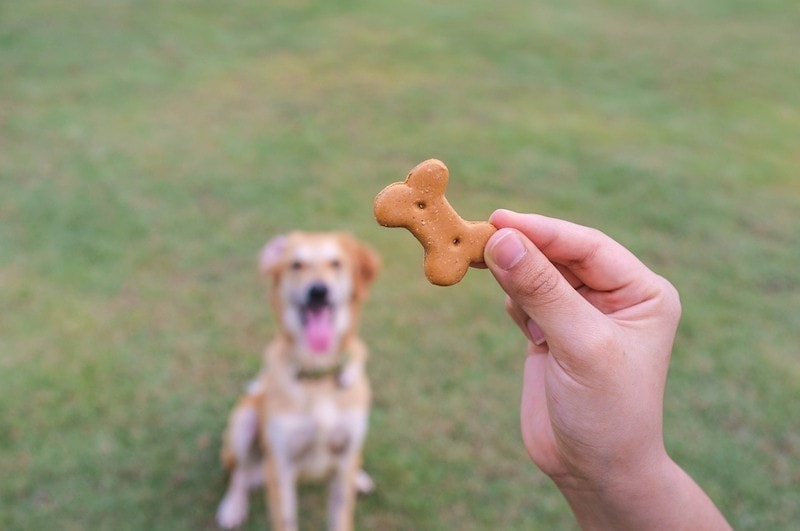
Most dogs will eat almost anything in sight, so it can be very concerning when they suddenly stop eating. Perhaps your pet is refusing to eat their mealtime food but they’re still eating treats. While it’s better than not eating at all, you definitely will want to get to the bottom of this behavior as quickly as possible so you can provide your pet with balanced nutrition that will keep them healthy.
We’ve created a list of reasons your dog might be refusing to eat their normal dinner. We’ll also discuss what you can do to get your pet eating again and when it’s time to call the vet.
The 5 Reasons a Dog Won’t Eat Their Food But Will Eat Treats
1. Your Dog is Sick
Several illnesses can eliminate your dog’s appetite, causing them to avoid their dinner. Sometimes tempting them with something special like a tasty treat or a blended diet of boiled chicken and rice can get them to eat, but they will continue to avoid regular food. This is a sign that your pooch needs to be checked by a vet as soon as possible so the condition does not worsen, especially if alongside having a poor appetite, they are lethargic, have an upset stomach, or show any signs of not feeling well.
Subtle changes in appetite and drinking habits can indicate an early start of some of the common conditions in dogs, such as organ system disease, and are often accompanied by weight loss.
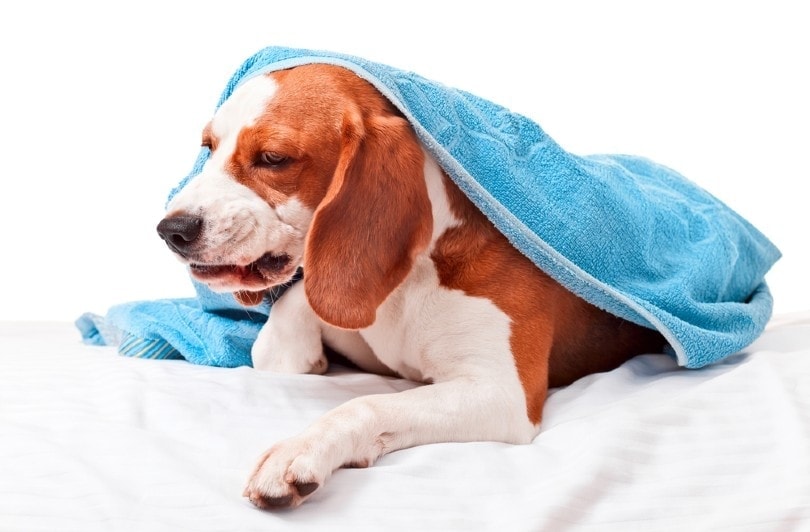
How to Get Your Dog to Eat Again?
If you think your dog is not feeling well, you will need to make an appointment with the vet quickly, especially if your dog does not begin to eat again within a day or so. If your dog is usually fussy, you can offer a blended diet of cooked chicken, white fish, and rice, but this may still not do the trick. Also, make sure you are not giving your pup any human food that can cause them further discomfort.
2. Dental Issues
Experts say that more than two-thirds of dogs over the age of 3 suffer from some form of dental disease. Your dog may have developed a toothache or periodontal disease or may have a fractured tooth that hurts when they eat the hard kibble, in which case, they may prefer the wet food instead. If the treats are softer than the kibble, it could also be a sign your dog is having dental issues.
Chewing awkwardly, wincing while eating, dribbling, and bad breath are also commonly noticed signs.
How Can I Make My Dog Eat Again?
If you think your pet is suffering from a dental condition, you can try switching to softer food and make an appointment with the vet as soon as possible to have your dog’s teeth looked over. Your dog will likely need treatment from your vet to relieve their oral pain and treat the cause, which may involve dental work. Untreated dental disease can lead to a lot of pain for your pooch, as well as further systemic health complications, involving mainly the kidneys, liver, and heart. So don’t ignore your dog’s dental disease, even if they are eating wet food.
It’s a good idea to get your dog used to manual brushings with dog-safe toothpaste to prevent future dental problems as long as possible. Crunchy food is also better than wet food for most dogs because the hard kibble may help scrape away plaque and tartar, especially in the case of prescription dental dog diets.
3. Your Dog Doesn’t Like the Brand
Many people like to try out different brands, and sometimes it can be difficult to find the brand you like, forcing you to experiment with something new.
While dogs are nowhere near as picky as cats, some canines can still be quite selective and refuse to eat some brands or flavors. Generally, food that is rich in animal protein, especially wet food with a strong smell, is more attractive to most dogs, but some may be very fussy and not particularly food-motivated, so it could be challenging to find food that works for them.
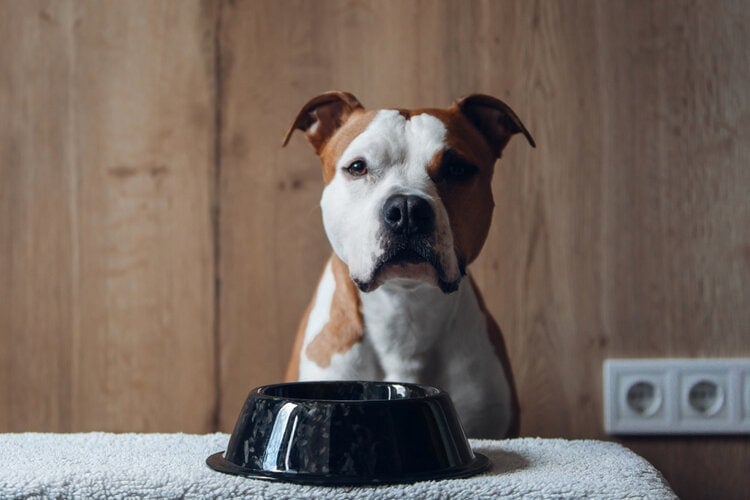
How to Get My Dog to Eat Again?
If you just purchased a new brand of food and your dog is refusing to eat, there is a good chance that they don’t like their new food. We recommend closing up the bag and purchasing a brand you know that your dog enjoys. If your dog eats the old brand, you can try mixing some of the new food with the old, initially in a very small percentage, to allow for a gradual change. If they are still not interested in the new food, you may need to discard or give away the new brand. If your dog still doesn’t eat, save the new brand and consult with your vet as there may be an underlying health reason for their sudden pickiness.
Any change in diet should be done slowly and gradually, over at least 7 days, to make sure your dog does not get an upset stomach from the quick diet change. Adding water or chicken broth to food may be enough for some picky eaters to get their appetite back, but make sure they first get a clean bill of health from your vet.
4. Your Dog is Having Too Many Treats
Dogs love their treats. If they are having quite a few each day, they may be feeling full and not as keen to eat their usual kibble, as something better and tastier is always available. Treats are often quite caloric and can easily predispose dogs to obesity. Some dogs may be particularly crafty, and if they are used to getting treats around dinnertime, they may actually be holding out for those instead.
How Can You Get Your Dog to Eat Again?
Gradually reduce the amount of treats, as they shouldn’t make up more than 10% of your dog’s total daily food intake. Also keep in mind that too many treats are not good for your dog, as they may cause weight gain and digestive issues. Treats are there for training and as an occasional tasty snack when you want to reward your dog. They cannot be used instead of their complete and balanced diet.
If your dog is used to getting treats around dinnertime, try mixing them with their usual food, but in small amounts, to see if they eat their whole meal. Then gradually reduce the number of treats.
5. Dog Food May Be Spoiled or It’s a Bad Batch
One reason that some dogs may refuse to eat their dinner is that you accidentally purchased a bad batch or the manufacturer made very subtle changes to the formula. Like any other type of food, dog food can wind up with some bad ingredients that will spoil the food or cause it to smell or taste bad. Inexpensive brands might have less quality control, which can result in spoiled chicken or fish getting into the food, but this still occasionally happens with high-end foods, as well. This can also happen due to prolonged or inadequate food transport and storage. Familiarize yourself with the consistency, texture, and smell of your dog’s food, and check the package for any damage and the expiration date. Giving your dog spoiled food may lead to an upset stomach, and some dogs will need veterinary attention.
However, most dogs love their food too much and may not be fussed even if the food has clearly gone bad. So relying on your dog to choose if something is good for them or not is not a great way to distinguish a bad batch from a good one. Some dogs will even eat obviously spoiled, rotten, or even moldy food, as to them it smells absolutely great. Yuck, right?

How Can I Get My Dog to Eat Again?
If your dog eats the same food every day but suddenly stops when you open a new bag or a can from a new box, there is a chance that spoiled ingredients are to blame or that the formula was changed and your dog can tell the difference. But there is also a good chance that your dog is actually not feeling well, and the food is absolutely fine. If you find that the food has expired, or there is damage to the packaging, change in texture, appearance, obvious mold, or unpleasant smell, discard the food straight away.
If your dog is keen to eat other dog food, and their appetite and demeanor are otherwise unaffected, consider purchasing another bag of food or speaking to the food manufacturer. If your dog eats the new food, keep the old bag and contact the food company and tell them about your experience. They may ask you to send them the food for testing. If your dog refuses to eat the new food, something else is most likely the cause, and you should get your pooch checked out by a vet as soon as possible.
Conclusion
Most dogs will refuse to eat their dinner if they are not feeling well or have oral pain. It’s crucial to contact your vet as soon as possible if your usually very food-oriented dog is refusing to eat their regular food, as this is often a sign of an underlying health condition that needs investigating.
Some dogs are very fussy and not that food-motivated, and it may be more challenging to get them to eat and find the food they like. These dogs will usually eat treats well and will be otherwise absolutely fine. However, you will need to get your pet to the vet if more than one day goes by without them eating a proper meal. This way, your vet can establish if something is wrong with your pooch or if they are just genuinely fussy.
We hope you have enjoyed reading this guide, and that it has helped answer your questions. If we have helped your dog return to their normal eating habits, please share this discussion about why your dog won’t eat food but will eat treats and what you can do about it on Facebook and Twitter.
- Related Read: Buying Dog Food in Bulk: Complete Guide
Featured Image Credit: pakornkrit, Shutterstock



